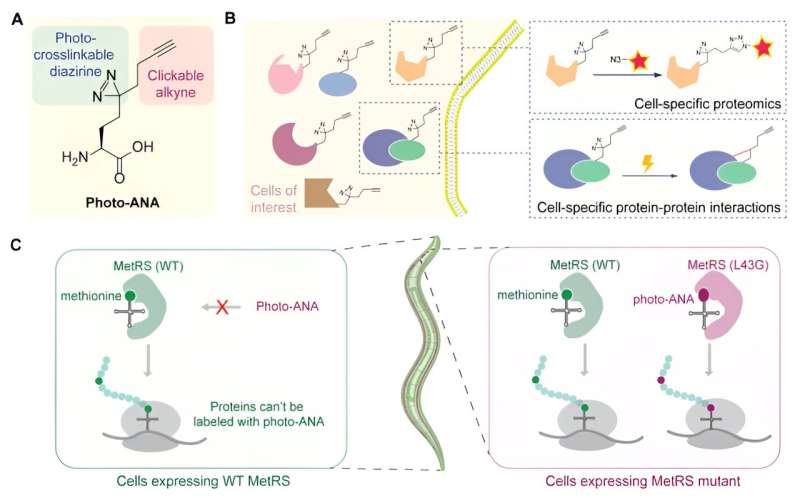This article has been reviewed according to Science X's editorial process and policies. Editors have highlighted the following attributes while ensuring the content's credibility:
fact-checked
peer-reviewed publication
trusted source
proofread
Scientists develop novel approach to interrogate tissue-specific protein–protein interactions

Multicellular organisms, like animals and plants, have complex cells with diverse functions. This complexity arises from the need for cells to produce distinct proteins that interact with each other. This interaction is crucial for cells to carry out their specific tasks and to form complex molecular machinery.
However, our current understanding of such protein–protein interactions often lacks cellular contexts because they were usually studied in an in vitro system or in cells isolated from their tissue environment. Effective methods to investigate protein–protein interactions in a tissue-specific manner are largely missing.
To bridge this technology gap, a collaborative research team of The University of Hong Kong (HKU), led by Professor Xiang David Li from the Department of Chemistry and Professor Chaogu Zheng from the School of Biological Sciences, both from the Faculty of Science, along with Dr. Xiucong Bao from the School of Biomedical Sciences, Li Ka Shing Faculty of Medicine, recently developed a novel chemical biology approach.
The team labeled proteins from specific cells with a bifunctional amino acid probe that allows the labeled proteins to be isolated and captures protein–protein interactions through photo-crosslinking.
This new method, Methionine Analog-based Cell-Specific Proteomics and Interactomics (MACSPI),has allowed the team to identify many new tissue-specific proteins and protein interactions, helping us better understand how cells work in living organisms and study various biological problems, such as organ development and disease pathogenesis.
The work was recently published in the Proceedings of the National Academy of Sciences.
Innovative design
The team designed and synthesized an unnatural amino acid (photo-ANA) that is structurally similar to methionine, the naturally occurring amino acid, but with two additional components.
One component is an alkyne group, which can be used as a chemical handle for the labeled proteins to be extracted and purified. The other is a diazirine group, which can be activated by light to create stable covalent linkages between the labeled proteins and any molecules they interact with.
Next, the team engineered an enzyme called MetRS to create a variant that can recognize and incorporate the unnatural amino acid into proteins as they are being built. By controlling the expression of this engineered enzyme in specific tissues, only proteins from the tissue of interest are labeled by chemical probe. Moreover, with light-induced crosslinking, protein complexes from specific tissues can be captured and isolated.
As a proof-of-concept, the team applied the MACSPI method to profile proteins from muscle cells and neurons, respectively, in a model organism called C. elegans and found many novel tissue-specific proteins.
The team also demonstrated the method's utility in capturing tissue-specific protein–protein interaction by identifying tissue-specific interactors of a ubiquitously expressed protein, such as the molecular chaperone called HSP90. It was found that HSP90 binds to distinct sets of proteins to regulate different biological processes in muscles and neurons.
"This study is an excellent example of how innovative chemical labeling methods can help solve difficult biological problems," said Professor Xiang David Li.
"Understanding protein–protein interaction at the cellular resolution is often critical to decipher the molecular mechanism of a pathological process. For example, we are currently exploring the functions of the neuronal HSP90 interactors we identified; some appear to be involved in neurodegeneration in a Parkinson's disease model," said Professor Chaogu Zheng.
The team envisions that the MACSPI method can be used in many multicellular organisms to profile proteomes and interactomes with spatial and temporal specificity, which can facilitate a broad spectrum of biological and biomedical research.
More information: Siyue Huang et al, MACSPI enables tissue-selective proteomic and interactomic analyses in multicellular organisms, Proceedings of the National Academy of Sciences (2024). DOI: 10.1073/pnas.2319060121
Journal information: Proceedings of the National Academy of Sciences
Provided by The University of Hong Kong





















